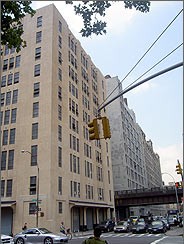
Stalking Chelsea
Last week I jumped right in, taking the crosstown bus to Chelsea. I was armed with my concealed must-see list, which is the only way to go. Why haven’t I kept all of these the way art criticKim Levindid, as proven by her show at Ronald Feldman a while back?
People will collect anything. Aside from a major collection of American modern dinnerware and some outsider art, I collect face jugs, lightning rods, and gear-shift knobs; I am accumulating those little plastic bag-closers and I cherish a few examples of the plastic grass that comes with takeout sushi. But Marilyn Karp, artist and mate of art dealer Ivan Karp,is the queen of collectors. See her sumptuous and inspiring new Abrams book called In Flagrante Collecto: (Caught in the Act of Collecting). She even collects other people’s abandoned shopping lists.
About a third of the way through my art list, I do a little triage. There are now so many brand-new galleries at street level that you can just look through the windows into their one-room showcases to expand your horizons. It’s a little bit like the windows in Amsterdam’s red-light district.That there are more than enough discreet “gentlemen’s clubs” surviving on some of these high-rise-condo megablocks makes the metaphor perhaps too apt.
Question: where does all the young art go at the end of the month? Answer: into storage. The secret of the art world is that the front end has, as its main purpose, the creation of customers for art warehouses. Storage! That’s where the real money is.
Biographies in plastic sheets at front desks everywhere proclaim so many too recent MFAs that you begin to wonder if you are looking at real art or bad class assignments. I will not bore you with the stories of dealers swooping down on would-be painters before they graduate. They want them young, dumb, and cheap. And that’s what they are getting.
On the other hand, in ARTOPIA we are always positive; we do not yield to negativity. We broadly proclaim that art is like nature. Thousands of seeds must be produced to result in one daisy. Art is profligate.
And art is still full of surprises.
* * *
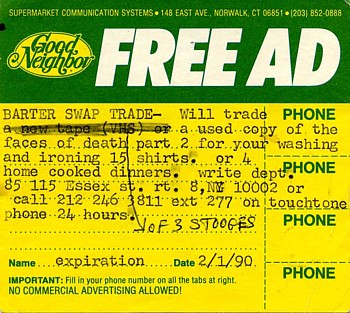
Postcard for Street Poets & Visionaries, Oliver Kamm/5BE Gallery
Who would have thought that the first time out I would come upon an authentic genius? Holland Cotter’s little review in The New York Times did not really prepare me. But one must give him credit for the stretch.
Drawn to the exhibition of the UbuWeb Collection at the new Oliver Kamm/5BE Gallery (621 West 27th Street, to October 14) by the promise of found poems — under the title “Street Poets & Visionaries” — I was nevertheless blown away by a modest lineup of framed pages from David Daniels’ The Gates of Paradise on the opposite side of the room.
Not that the “Street Poets” part of this double-headed is inconsiderable. “In the tradition of Jim Shaw’s ‘Thrift Shop Paintings,’ ” UbuWeb.com (weblished byKenneth Goldsmith, poet and editor of I’ll Be Your Mirror: The Selected Andy WarholInterviews) has been salvaging the kind of hand-wrought, overwrought signage that many may have noticed on the streets, but have not been bold enough to seize for future delectation. THIS LOOKS LIKE A GOOD PLACE TO MASTURBATE is only a beginning. Are we not charmed by “Barbra Streisand is Strictly a ‘Pelican: which has a ‘pouch’ for ‘ Puchis for ‘Slippers.’ Cyanide?”
Some, however, are quite horrible: “My only Son Kidnap at birth in the hosp His name Ezekiel…” This is not the place to repeat the rant against Mongo Santamaria. But it is always good to be reminded by the handmade sign that says: YOU ARE BEING MANIPULATED BY THE MEDIA!!! DON’T BELIEVE WHAT YOU SEE/READ/HEAR!!!
The Kamm Gallery wall of handouts and handmade signs is convulsive in a way that would put Andre Breton to shame. Or is it life that has put the Pope of Surrealism on the back-burner? We sense Artaud instead. Where should we pray? Nowhere is safe, or as one announcement screams: ANY PEDOPHILES WHERE YOU PRAY?
So many of these signs are in caps that I began to wonder if writing in all capital letters is not a bow to Bauhaus typography, but rather a sign of instability or rage. Well, probably not, after all ARTOPIA is always in caps, and there is no instability or rage in ARTOPIA, right?
In any case, you can see some of these raucous rants for yourself by going to www.ubu.com and clicking on the word “outsider” in the paragraph describing the Kamm Gallery Show.
There’s lots more too, and I was glad to find this site. It’s my kind of stuff, a virtual museum of Fluxus and other not-exactly-lost causes. Check out a clip of Joseph Beuys making a fool of himself trying to be a pop singer; writings by LaMonte Young; films by Yoko Ono and Robert Breer. And, as they say, much, much more.
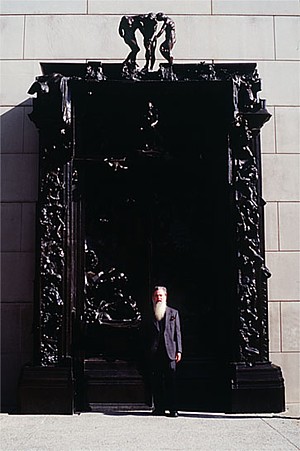
The Gates of Paradise
I am not so sure the two parts of the UbuWeb Collection exhibition really and truly go together. They are united by words and a sort of wild use of typography, and certainly by the sensibility that appreciates the visionary whatever form it takes and wherever it comes from. We ourselves have seen some of the people who post similar street signs. Stefan Zweig’s only published novel, the flawed but irritating and ultimately devastating Beware of Pity, has taught me just that.
But David Daniels, from what I can tell from the two interviews available on the internet, is not mad. He may be quirky and a little bit opinionated, but he seems benign.This is not the countertenor David Daniels, I hasten to add, but the visual poet David Daniels, 73, residing in Berkeley. He has a long, white beard. He is self-taught, as it were, and makes shaped poems.The Gates of Paradise is four-hundred pages. I think of it as the first internet poetry masterpiece, and you can see it/ read it at www.gatesofparadise.com or through a www.ubuweb.com link.
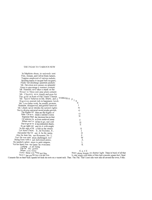
His poetry is shaped like flowers, fountains, animals, goblets; there’s even one shaped like a man urinating (“THE PAEAN TO VARIOUS NEW YORKERS PISSING ON THE SIDEWALK GATE”). The words that make up these images, jammed or spread out — Daniels uses Word and writes/draws on a computer — are rants, hymns,sound poems cobbled from the internet, gushing from inside, and, oh yes, transcriptions of what people think he said during his discussion sessions. Apparently he charges money for these, and this supplements his Social Security check; he has also delved into Bonsai, and in the past he made some money as a painter copying masterpieces. Inspirations: a beloved uncle was a typographer; and his son, a poet and translator, gave him an anthology of “bad poetry.”
Or, since Daniels clearly has some art background, are these really drawings made with words?
David Daniels: The Transformation of Diogenes from Psychits Barrel to Solid Lead Cocktail:
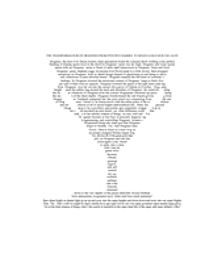
There have been shaped poems before. The Greeks even had a word for it: tecknopaegnia. And we know Robert Herrick’s altars. Much later Tommaso Marinetti invented parole in liberté (rather like the proverbial “explosion in a shingles factory” ) and then Guillaume Apollinaire,one of my spiritual uncles, invented Calligrammes: Poems of Peace and War.
What is different about the shaped poems of Daniels is that they are narrative, Dickinsonian. But because they also exhort, we can also think of Blake.
Then too, whatever formal education Daniels garnered stopped before the wretched postmodernisms that have deniedambition and originality and irony, leaving all the irony to philosophy — where it doesn’t belong. Daniels was never disabused of attempting to compose a masterpiece. Is that his secret? This is not only the first move of Elder Art, I say itis also the first move of Neo-Modernism and the remodernization of culture, which will, of course, leave out all the bad stuff like racism and sexism. Daniels’ enthusiasm is infectious.
From Daniels’ introduction:
Each of the over
350 gates of The Gates Of
Paradise is an icon of our world, with idea,
picture, meter, prose, or melody all shaping each other. I
have been making words out of pictures and picture out of words
for over sixty years. The Gates of Paradise is a poem that exhibits some of
the many ways I’ve seen living and dead human beings struggling to find happiness
inside of themselves and outside of them. These gates are paradisiacles of people and
animals, and objects, from dancing body parts to Las Vegas lounge singers, from Brooklyn
Dodger fans to cyborg Babbits, from nerve wracked saints to L. A. bottom feeder rabbits, from
lovely air heads to heads of state to heads of lettuce, from black holes to pear shaped planets withone often transforming into another as the poems proceed…
This is only a fragment, and my version of the shape is approximate.
For another tempting taste:
The fifth page has a wonderful title line: THE WHAT IS THE PEARL WASHED UPON THE OCEAN OF BEING GATE. The next three lines of the page go something like this:
Yes The Heart Of The Heart Of The Mind
Is An Upside Down Throbbing g Split Bulb Of
A Pearl Tulip Refraction Pa rticle Wave Plumb
But then the lines turn into a heart, sort of. You have to see it to believe it, so I advise you go immediately to www.thegatesofparadise.com and take a look at the pages. Once you get the pdf page, make sure to enlarge it so it is easier to read. Otherwise you are on your own. The poetry in poetry is what cannot be summarized or made into a précis. Who said that? Well, whoever did was certainly right.
Some help: The shape of the poem is the versification that thwarts intended meanings just enough to allow the “truth” that inspiration creates. And here is myillustration of this:
The distance between intentions and expression is the tension that is the inspiration for living words in a poem as opposed to whatever it is you thought you wanted to say for yourself in your newest butterfly-shaped poem
became:
The dis-
tance betwe
en inten tions and
expression is the tent
ion that is the inspiration for
living words in a poem as op
posed to whatever it is
you thought you wanted
to say for yourself in
your new est moth-
. shaped poem
about me
The great thing of course is that you can see/read The Gates of Paradise on your computer (and two more recent cycles). Or print the pages out one at a time and read them, or hang them on your wall and read them there. They are pictures you hear when you read them. The Years (in color) is autobiographical — as if The Gates is not — but has an entry for the year 2133 that begins “YOU KNOW? IT’S NOT SO BAD BEING DEAD? YOU DON’T HAVE TO WORK?”
And since I’m in a quoting mood, I’ll end with the two quotes that begin The Gates of Paradise:
When I’m caught between two evils, I like to take
the one I never tried.
— Mae West.
A book must be an ax for the frozen sea within us.
— Franz Kafka.
For an ARTOPIA alert when new entries are available contact perreault@aol.com
